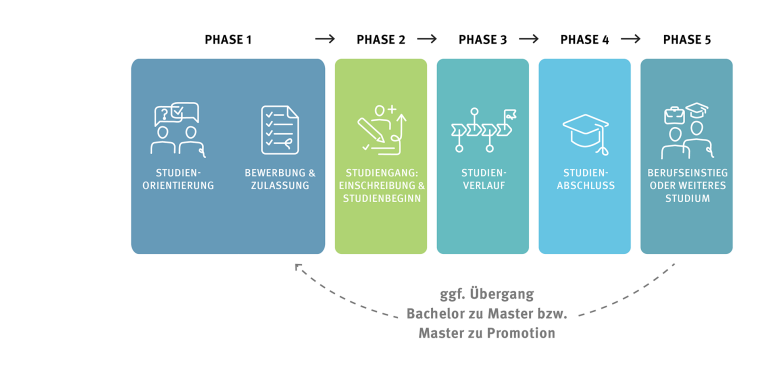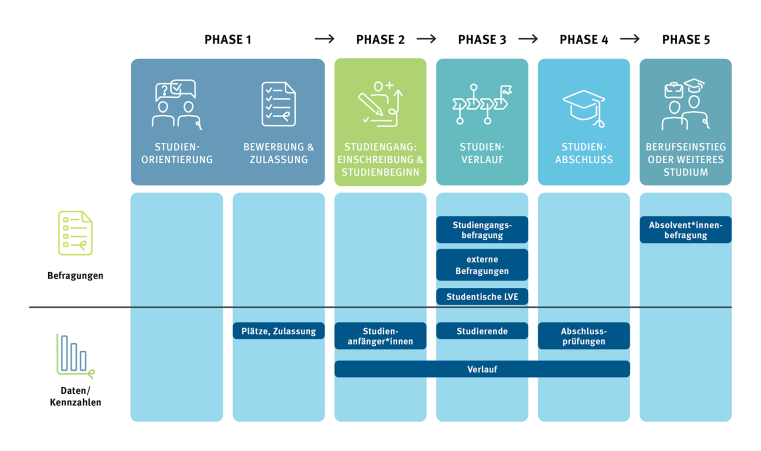Evaluation

The evaluation of studies and teaching at the University of Münster is based on the entire student life cycle (see graphic Student Life Cycle). To this end, relevant information and data are systematically collected in order to evaluate and further develop degree programs on the basis of data. Established evaluation tools (= surveys, data, and key figures) are used to collect important information for each phase of the degree program (see graphic: Evaluation Tools).
The results of the evaluations are standardized and prepared in a user-friendly manner and made available to the departments on a regular basis. Different procedures may apply to degree programs with additional legal requirements (these include state examination, church, international cooperation, continuing education, and dual degree programs). For these programs, survey organization and data management are often complex, as students are optionally enrolled or exam administration is not centralized. The survey results, data, and key figures are intended to help identify development potential, initiate targeted quality development measures, and review their effectiveness.
Emphasis is placed on data minimization: students should only participate in as many surveys as absolutely necessary. Data protection is also taken into account, as results are only reported if anonymity is guaranteed. The surveys, data, and key figures are also regularly refined on the basis of scientific findings.


